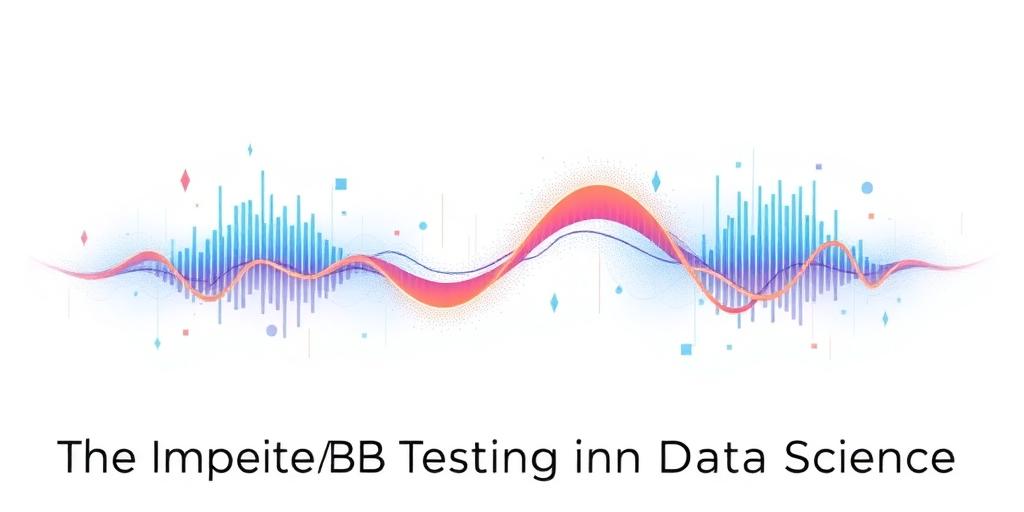The Indispensable Role of A/B Testing in Data Science
In the realm of data science, rigorous experimentation is not merely an option; it is a cornerstone of evidence-based decision-making. Among the various methodologies available, A/B testing stands out as a singularly powerful tool for validating hypotheses, optimizing products, and driving tangible business outcomes. Its importance cannot be overstated for any organization committed to data-driven growth.
Understanding A/B Testing: A Foundational Overview
At its core, A/B testing, also known as split testing, is a controlled experiment that compares two versions of a single variable—Version A (the control) and Version B (the variation)—to determine which one performs better against a defined metric. This statistical method allows data scientists to isolate the impact of specific changes, moving beyond mere correlation to establish causality. For instance, testing two different call-to-action buttons on a webpage or two distinct recommendation algorithms within an application can reveal which version yields higher conversion rates or user engagement.
The process typically involves:
- Formulating a Hypothesis: A clear, testable statement about the expected outcome of the change.
- Defining Metrics: Identifying key performance indicators (KPIs) that will measure success (e.g., click-through rates, conversion rates, time spent on page).
- Random Assignment: Users are randomly assigned to either the control or variation group to ensure statistical validity and minimize bias.
- Data Collection: Tracking user interactions and metric performance for both groups over a predetermined period.
- Statistical Analysis: Applying statistical tests (e.g., t-tests, chi-squared tests) to determine if the observed differences are statistically significant, rather than due to random chance.
- Decision Making: Based on the statistical evidence, deciding whether to implement the change, iterate on the variation, or revert to the control.
Why A/B Testing is Crucial for Data Scientists
A/B testing provides data scientists with a robust framework for practical application and validation of their models and insights. Here are key reasons for its indispensable nature:
1. Validating Hypotheses with Statistical Rigor
Data science often begins with hypotheses derived from exploratory data analysis or business intuition. A/B testing provides the empirical evidence needed to confirm or refute these hypotheses. It allows data scientists to move beyond assumptions, ensuring that proposed changes are indeed beneficial and not merely speculative. This systematic approach builds confidence in the data-driven recommendations.
2. Optimizing User Experience and Product Features
For product development and user experience (UX) design, A/B testing is paramount. It enables iterative improvements by directly measuring the impact of UI/UX changes, new features, or content variations on user behavior. Whether it’s improving conversion funnels, increasing engagement, or reducing churn, robust A/B tests provide actionable insights for continuous product enhancement. Effective A/B testing strategies are key to unlocking better user flows.
3. Mitigating Risk in Deployment
Deploying a new feature or algorithm without prior testing carries inherent risks, including negative user reactions, decreased performance, or financial losses. A/B testing acts as a crucial risk mitigation strategy, allowing data scientists to test changes on a small segment of the user base before a full rollout. This phased approach minimizes potential adverse effects and provides an opportunity to course-correct.
4. Fostering a Culture of Experimentation
By regularly conducting A/B tests, organizations cultivate an experimental mindset where decisions are informed by data rather than solely by intuition or seniority. Data scientists play a pivotal role in driving this culture, championing the scientific method as the foundation for innovation and improvement. This leads to more dynamic and adaptive business practices, focusing on empirical evidence in data science.
Best Practices for Effective A/B Testing
To maximize the efficacy of A/B tests, data scientists must adhere to several best practices:
- Clear Objectives: Define what success looks like before starting the test.
- Adequate Sample Size: Ensure sufficient statistical power to detect meaningful differences. Tools can help calculate the required sample size.
- Duration of Test: Run tests long enough to capture natural user behavior cycles and account for novelty effects.
- Segmentation: Consider running tests on specific user segments to understand differential impacts.
- Holistic View: Monitor secondary metrics to avoid optimizing one metric at the expense of others.
- Documentation: Meticulously record hypotheses, methodologies, results, and conclusions for future reference and organizational learning.
Challenges and Considerations
While invaluable, A/B testing is not without its challenges. Data scientists must contend with potential pitfalls such as:
- Novelty Effects: New features might initially show inflated positive results due to user curiosity.
- Seasonality: External factors like holidays or specific days of the week can influence results.
- Network Effects: Changes impacting one user might indirectly affect others in the same network.
- Statistical Significance vs. Practical Significance: A statistically significant result may not always translate to a practically meaningful business impact.
- Multivariate Testing: As the number of variables increases, traditional A/B testing can become cumbersome. More advanced techniques like multivariate testing or multi-armed bandits may be necessary.
Conclusion: A Pillar of Data-Driven Excellence
A/B testing is more than just a technique; it is a fundamental pillar of data science that enables organizations to make informed, evidence-based decisions. For data scientists, mastering A/B testing methodologies is crucial for validating models, optimizing products, and ultimately driving meaningful business value. By embracing rigorous experimentation, companies can continually refine their offerings, enhance user experiences, and maintain a competitive edge in an increasingly data-centric world. The continued integration of A/B testing in data science practices will be essential for sustained success.









